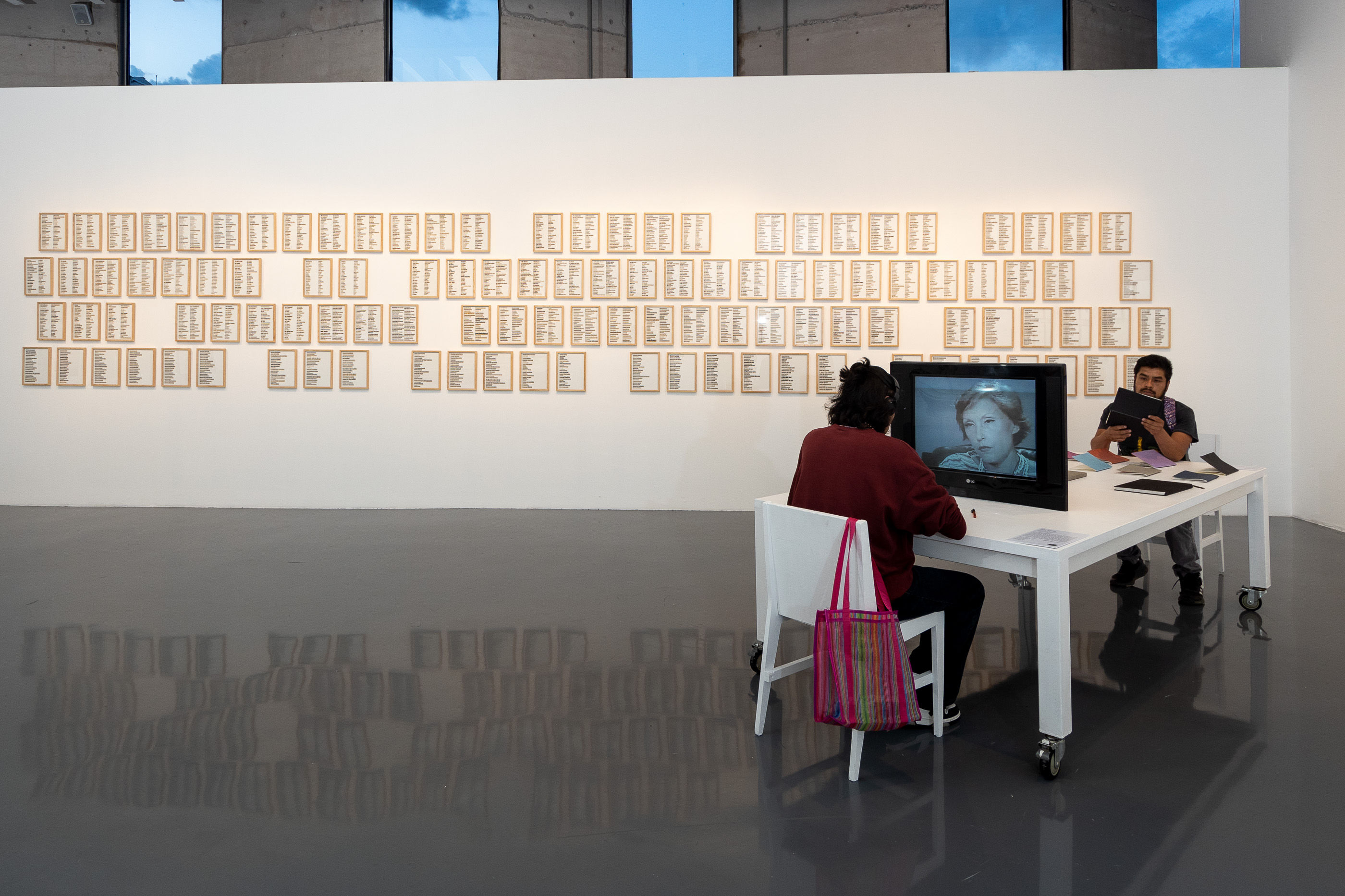
Review
Fictions in Contemporary Art at the Centro Cultural de España en México
by Andrea Bustillos Duhart
Reading time
6 min
On view at the Centro Cultural de España in Mexico City until October 5th, Ficciones. Narratividad en el arte contemporáneo [Fictions: Narrativity in Contemporary Art], curated by Ferran Barenblit, goes beyond exploring the relationship between art and literature. It offers a critical reflection on language as a structure of power, a form of thought, and a site of contestation. Featuring works by Alan Sierra, Ignasi Aballí, Isa Carrillo, Mariana Castillo Deball, Andy Medina, Mabel Palacín, Gonzalo Elvira, Dora García, Verónica Gerber Bicecci, Jorge Méndez Blake, Teresa Solar, Irene Solà, Los Torreznos, and consonni, the exhibition investigates how words—and their absence—shape what we understand as truth, identity, and experience. In an era saturated by media, narrative ambiguity, and an urgent need to truly listen to one another, Ficciones unfolds a body of work that exposes both the potential and the fragility of language as a means to make sense of the world.
The title immediately brings to mind F(r)icciones, the historic exhibition held more than two decades ago at the Reina Sofía Museum as part of the Versiones del Sur [Southern Versions] series. That show was key in fostering a critical reevaluation of Latin American art from a decentered, anti-dogmatic perspective. The resemblance between the titles—and the fact that Spain is again involved—initially made me suspicious. Are we still having the same conversation over twenty years later?
I begin the exhibition walking down the ramp from the elevator into the main gallery, accompanied by a series of banners. I’m immediately reminded of the role picket signs play in protests, of the ritual of making them with friends and colleagues before marching. I recall reading each one carefully, even photographing my favorites. Here, the banners are part of a public program led by artist Gonzalo Elvira. Their aesthetic and thematic diversity accommodates both indignation and humor. Inside, I encounter more of Elvira’s work—banners once again, where words take center stage, forming literary fictions and proclamations. I begin to grasp that the exhibition aims to unfold all the possible forms, uses, and misuses of language.
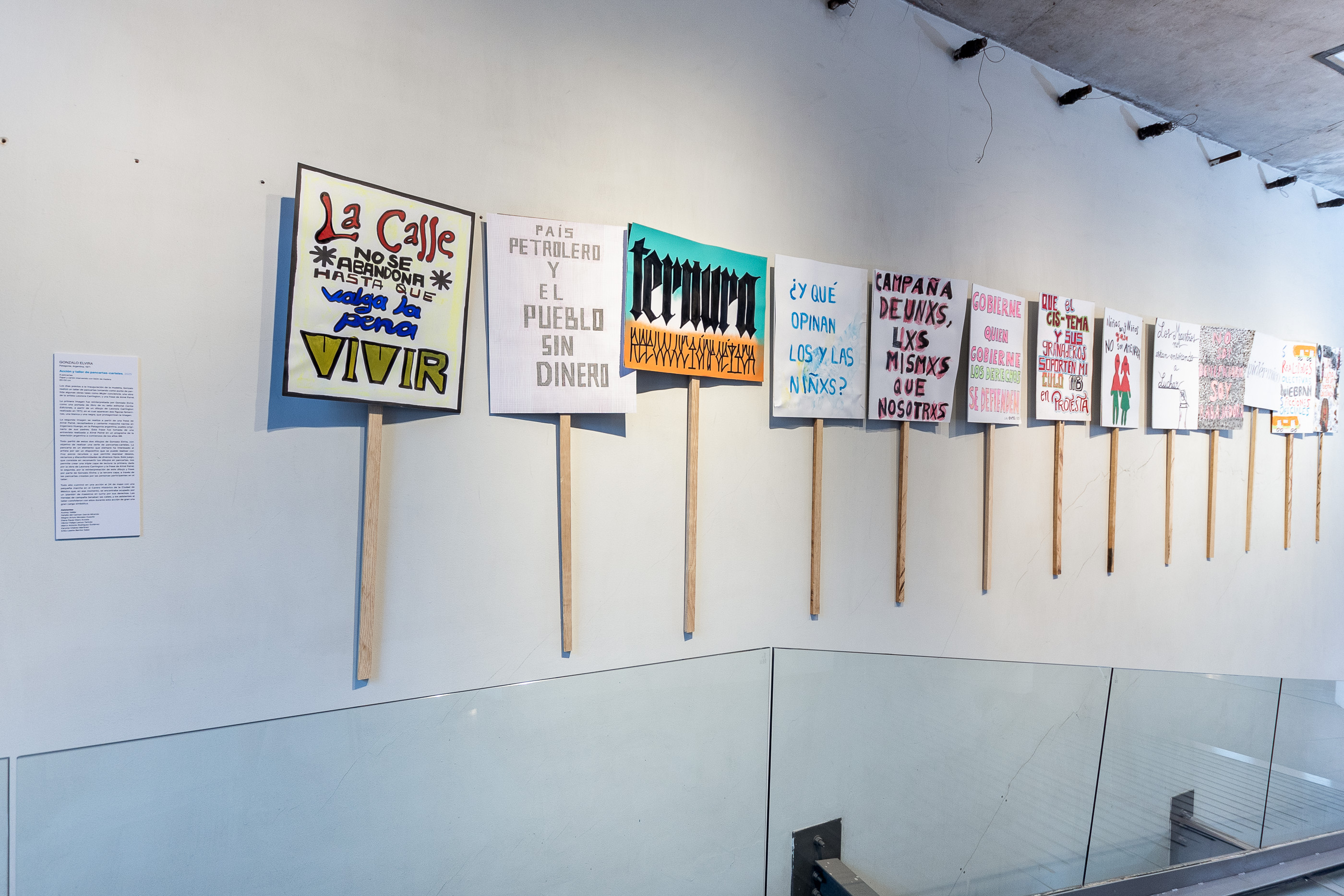
I come across La estética del silencio [The Aesthetics of Silence] by Verónica Gerber Bicecci, a series of abstract drawings made up of circles and lines. Next to it, inside a display case, sits a copy of Susan Sontag’s book with the same name. I find myself trying to decipher the piece, drawn in by its visual mystery. I think about how much I enjoy works that make me feel and think, that extend the moment of contemplation by generating connections, echoes, memories, and sensations. At the same time, I wonder why the mind so often seeks certainty. Reading the wall text, I learn that the drawings are visual translations of Sontag’s book. As the artist herself puts it, she “created an X-ray of pauses, composing a score out of every comma, semicolon, colon, period, and paragraph break.”¹
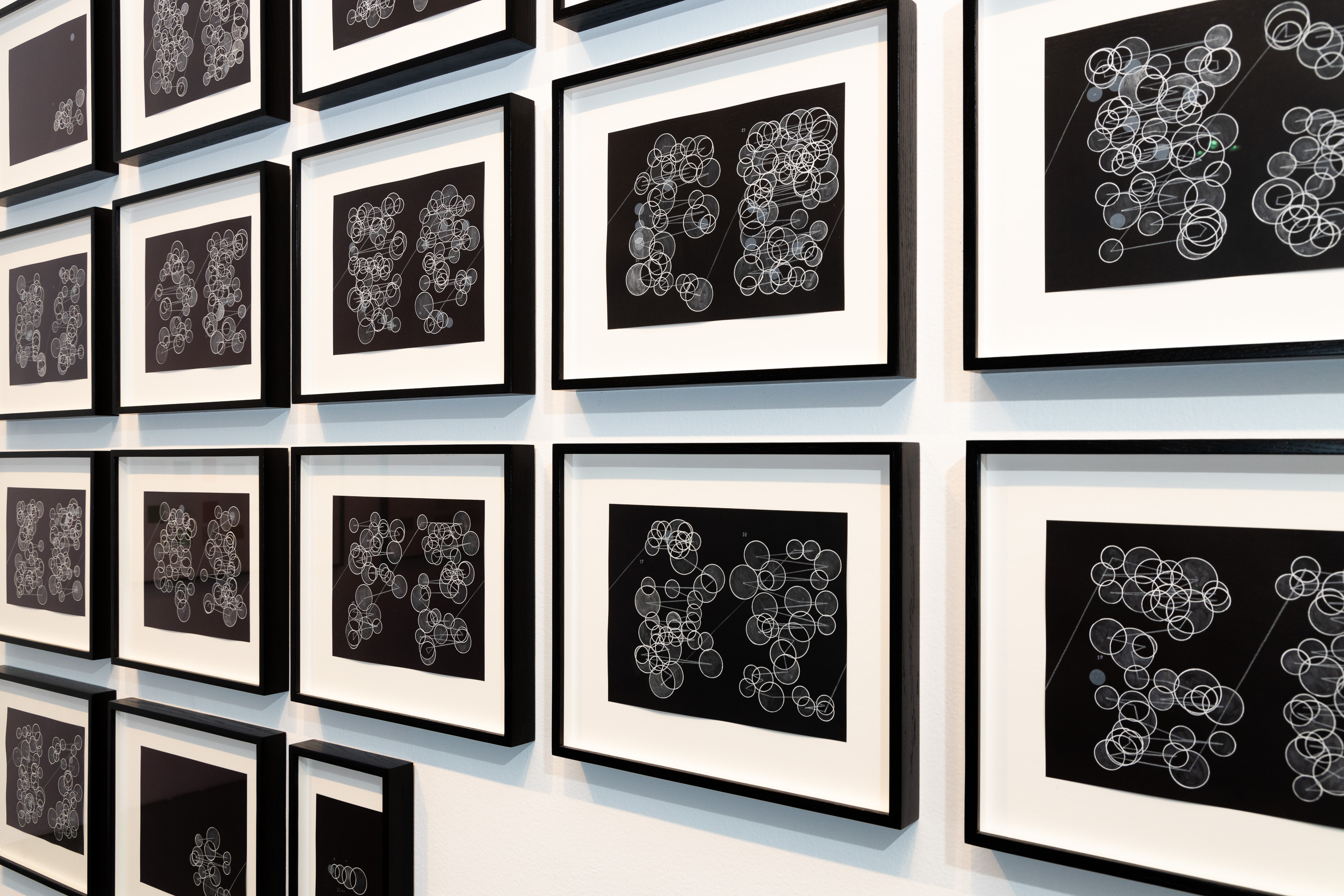
A rush of joy runs through my body as I begin to fully understand the piece, tying together its conceptual and formal elements into a cohesive image in my mind. I’m reminded of something I recently heard on a podcast: “The brain is a Bayesian prediction machine whose only goal is to avoid surprise.”² My mind jumps—quantum leap, literal or metaphorical—to Andy Medina’s Ninguna verdad absoluta sobre la facultad humana [No Absolute Truth About the Human Faculty], an installation in the central courtyard. It features a video and a computer for polygraph testing. The video combines archive footage and AI-generated images, ranging from early 2000s movie clips like Gladiator to surreal scenes of a cute kitten emerging from a human hand, all accompanied by a robotic voice questioning the nature of consciousness and truth. One question in particular sticks with me: Could consciousness be understood through a notion of truth? Which leads me to ask myself: Is it our biological system that constantly drives us to seek certainty? Could that be why, in the so-called post-truth era—with greater access to information than ever before—traditional notions of truth have begun to dissolve?
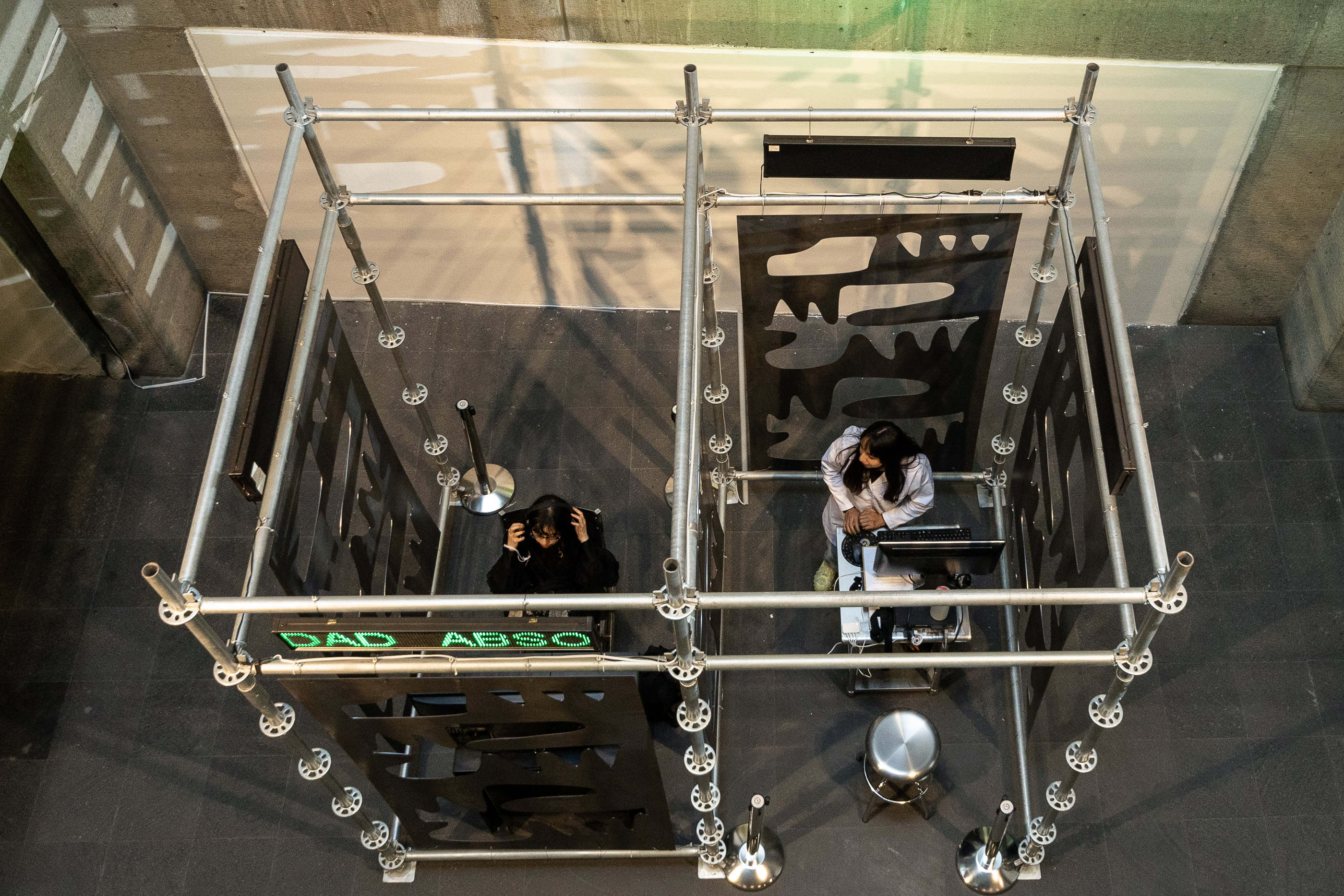
Rather than simply drawing links between art and literature, Ficciones questions how we use language—written, visual, or performative—to construct worlds. It starts from the premise that language is a social construct, and thus a fiction in itself—not merely a tool for communication, but a mode of thinking. Some pieces underscore the fragility of language as a container of truth. Jorge Méndez Blake reveals how a minor semantic shift—just a few altered words—can completely change the course of a story. In Ignasi Aballí’s Listados [Listings], written language appears as an unstable archive, where media discourse, far from offering clarity, exposes its own gaps and ambiguities.

Other works approach language as a site of political struggle. Alan Sierra’s Juegos Florales simulates a poetry contest hosted by an “official imagination officer,” a sharp satire of the state’s instrumentalization of culture. In contrast, Relato Lumbung by consonni proposes a collective, horizontal fiction inspired by communal farming practices and the reflection on the words used to describe them. Sierra deconstructs the fiction of power; consonni imagines alternatives. The show also gestures toward the impossibility of understanding one another. In Irene Solà’s piece, two people who speak different languages confess secrets to each other, without understanding or even hearing one another. Meanwhile, Isa Carrillo attempts to bring into language that which typically eludes it, exploring the translation of unconscious narratives that emerge during hypnosis sessions.
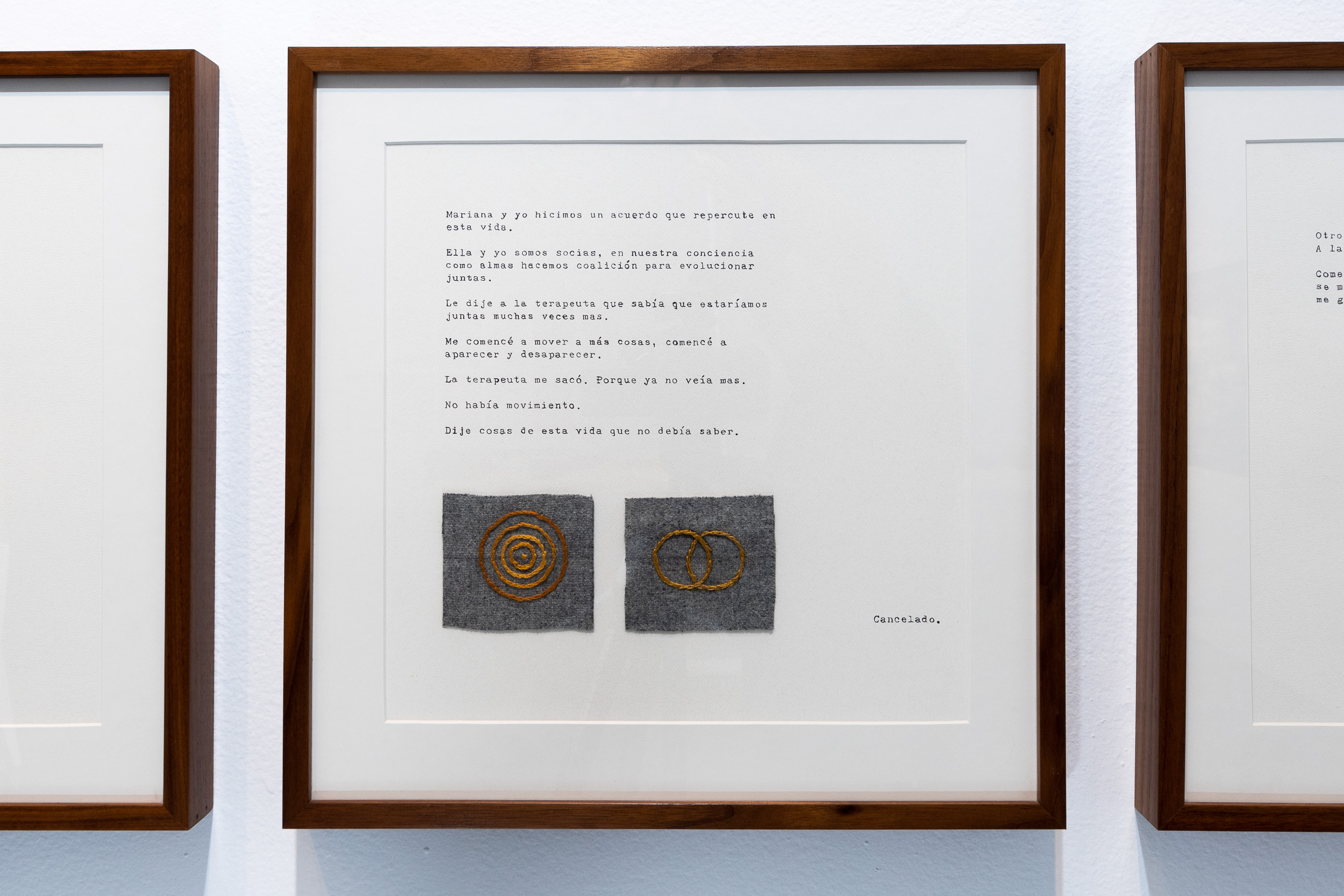
Despite my initial skepticism about the exhibition’s framework, I was pleasantly surprised. Ficciones doesn’t merely repackage subjective experiences for the sake of inclusion; it confronts us with a raw reality—one rooted in the necessity and failure of human communication, the media bombardment we face, and the confusion between truth and falsehood in the age of information overload. “In times when no one listens to anyone, in times when it’s everyone against everyone…”³ Ficciones compels us to face the paradox of language head-on: In a hyperconnected yet disconnected world, could art be the last remaining space where we can admit that every truth is, at its core, a negotiated fiction?
Translated to English by Luis Sokol
1: Found in https://www.veronicagerberbicecci.net/estetica-silencio-aesthetic-silence.
2: This phrase sums up the free energy principle developed by neuroscientist Karl Friston. According to this theory, all biological systems—from single-celled organisms to the human brain—seek to reduce surprise or prediction error in their perceptions and actions. https://en.wikipedia.org/wiki/Free_energy_principle
3: Al lado del camino, Fito Paez, 1999.
Published on August 10 2025